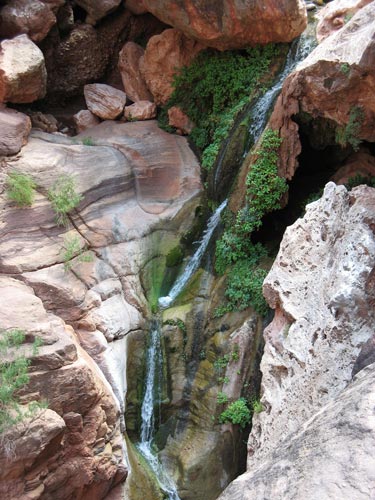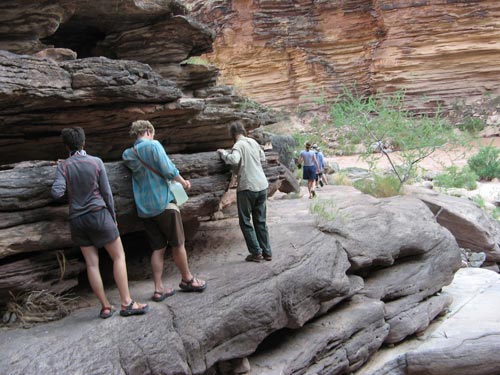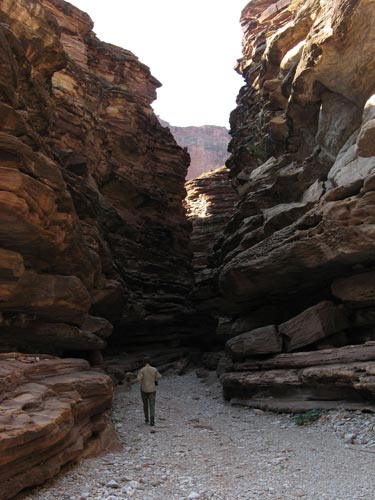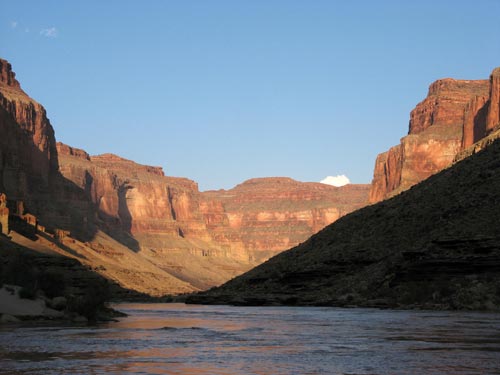
The cascade from the upper to lower falls...

... as it pours into the pool of the lower falls below

Hello down there!

The upper falls

There is yet another higher falls, but I wasn't willing to do the climb.

The Yellow-backed Spiny Lizard is named for its pointy scales. It eats ants, beetles, flies, grasshoppers, other lizards and plant material.
We head back down to the lower falls and took some time to nap and relax.

We loaded back into the rafts and continued on our way. We wanted to stop at Blacktail Canyon but stopped one canyon too early. It was still quite interesting.

A view upriver

The large rock in the center of the circular pit is most likely responsible for this erosion. As water swirls it around, it grinds the sides of the pit ever wider.

The back of the short canyon is an even larger circular pit.

Channels carved in the rock above show how water enters the pit.

Heading back to the rafts
The next canyon was indeed Blacktail Canyon (at mile 120). We walked to the end of it.

This does not look like your typical Grand Canyon scenery!...

... aahh... this is better. The tall narrow canyon is carved into Tapeats Sandstone.


It's a long way up.

We can go no further as we reach a dry waterfall chute.
The Grand Canyon is basically a giant look back through time. The rock layers represent almost two billion years of the planet's history. There are, however, a few pages missing from the book.
The Great Unconformity is a huge gap in the rock record. Tapeats Sandstone (about 550 million years old) rests directly upon Precambrian metamorphic rocks of granite and schist (rocks with no fossils or only fossil bacteria), meaning that anywhere from 250 million years to 1.2 billion years of geological history has vanished (1.2 billion years represents about 25% of the earth's history). While there are theories (erosion, not a lot of rock created in the first place, etc), what really happened to the rocks in between remains a mystery.

You knew you'd see this again... didn't you?

And here it is!

Leaving the canyon
We continued down the river until we reached Camp 122. It was too hot to have a fire so we had dinner by candlelight. Warm and cool breezes take turns blowing past us. My hands have started cracking and my feet are peeling from being constantly wet. But it's a small price to pay to get to be in the midst of such splendor.

Racing the setting sun

Arriving at Camp 122
return • continue

